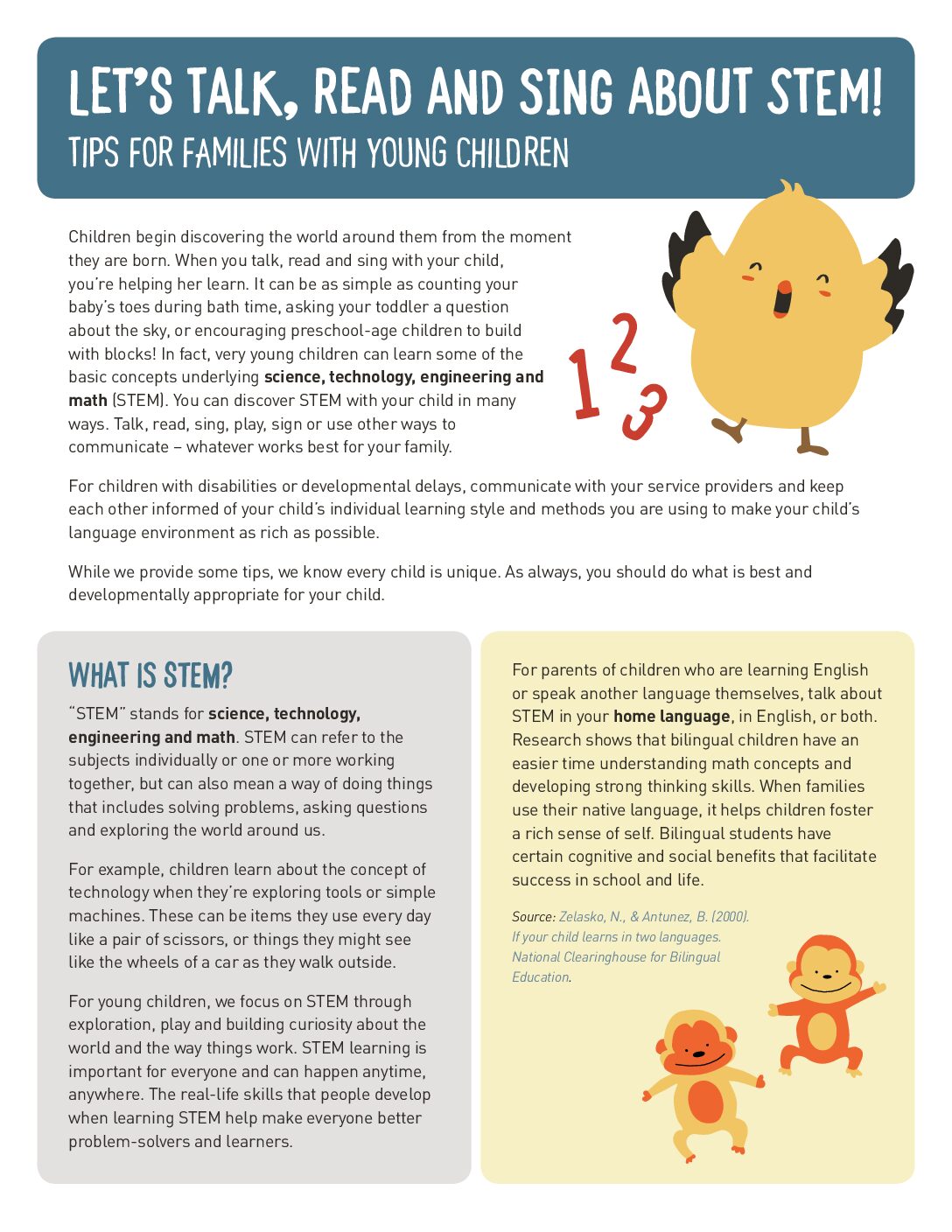Children start exploring the world from birth, and engaging in activities like talking, reading, and singing helps them learn important STEM concepts. For children with disabilities or developmental delays, it’s essential to work with service providers to tailor communication methods and create a rich language environment suited to their individual needs.
